About
Waterman Gallery
In 2013, the Department's Exhibit Gallery was renamed in honor of the late Richard Alan Waterman, a distinguished ethnomusicologist and anthropologist who spent his last years teaching at USF, and his wife Patricia Waterman, a noted folklorist and anthropologist, who taught in the department for many years, and passed away in 2016.
The Art of Forensics: Time to Solve the Nation's Cold Cases
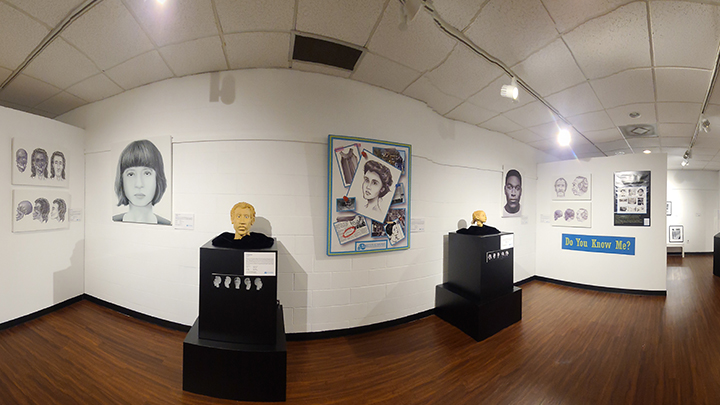
It is estimated that there are more than 50,000 Jane and John Doe Cases in the United States. We know this number is low. Numbers are self-reported and most agencies do not respond to voluntary surveys. The National Institute of Justice has called the missing persons problem in this country, “Our Nation’s Silent Mass Disaster.” Many of these individuals are victims of homicide or the manner of death was undetermined but recovered in public places with no links as to their identity, each one represents a family denied justice.
About the Exhibit:
The exhibit is a journey in which the public is able to visualize the investigative process. Jane and John Doe graves are exhumed, boxes of human remains are taken out of storage, some dating back to the late 1960s so that we can redo all the testing available in modern forensic anthropology, chemical isotope analysis, DNA analysis and forensic art. We then present the information to the public through a visual display. Forensic art plays a critical role in helping solve these cases. The images and stories are presented to the public in hope that someone will recognize them, or come forward with new information. Solving cold cases like these typically depends on someone who has information about their identity or homicide coming forward with information. With the public’s help, we hope to raise awareness about the problem of the missing and cold cases while increasing the likelihood of solving these cases.
Credits and Aknowledgments:
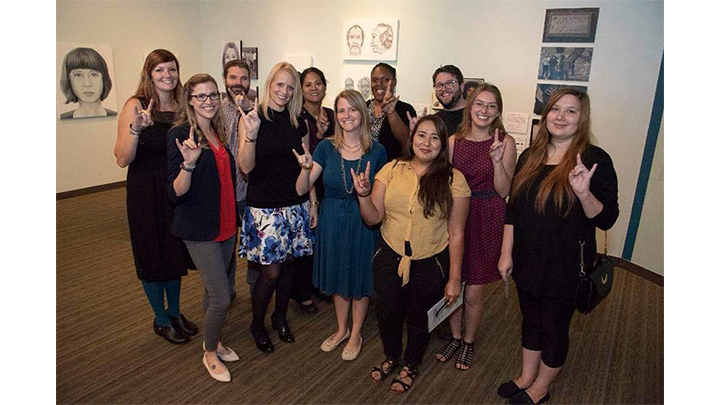
The USF Institute for Forensic Anthropology & Applied Science (IFAAS), in collaboration with numerous partners: Tampa Bay History Center, National Center for Missing and Exploited Children, Tampa Bay Area Chiefs of Police Association, Florida Sheriffs Association, Tampa Police Department, Sheriff’s Offices of Pasco, Hillsborough, Hernando, Polk, Alachua, Pinellas, Marion, Seminole, and Volusia Counties, Medical Examiner’s Offices of the 5th, 6th, 7th, 8th, 10th, and 13th Districts, the State Attorney’s Office for the 13th Judicial Circuit, and four out-of-state law enforcement agencies.
Gallery Archive
Exposure: Photography and Social Justice
The desire to understand the world and the desire to reform it are the two great engines
of progress, without which human society would stand still or retrogress. It is coexistence
or no existence.
Bertrand Russell
This exhibit explores the historical role of photography in raising awareness of social injustices, and questions its potential to continue to do so in a world that is saturated by images of suffering on a daily basis.
Visitors to the exhibit were introduced to a brief history of photography through images from important historical events* like the fight to end child labor, WWI, the Great Depression and the Civil Rights Era. Visitors are then asked to contemplate what goes into the making of a photograph, and how the meaning of an image can be manipulated. Finally, visitors will view images of contemporary social justice issues, including environmental conservation, issues of immigration and migration, and women's rights.
Throughout the exhibit, visitors will have opportunities to leave their own thoughts and comments. We hope you will stop by and let us know what you think!
This exhibit is the final product of the Spring 2018 Museum Methods (ANT4181) course taught by Vivian Gornik.
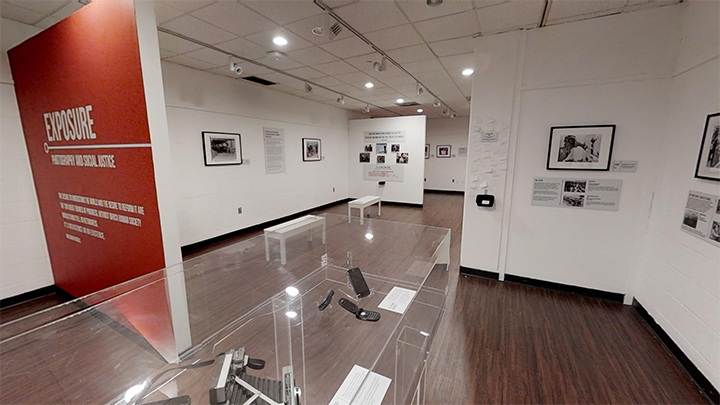
Gallery from the entrance
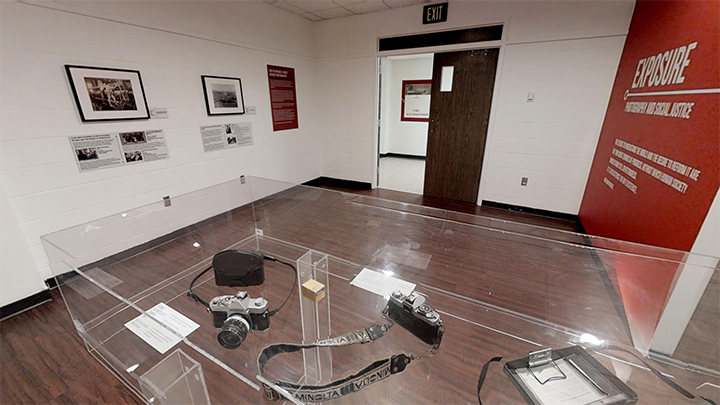
Entrance of the gallery
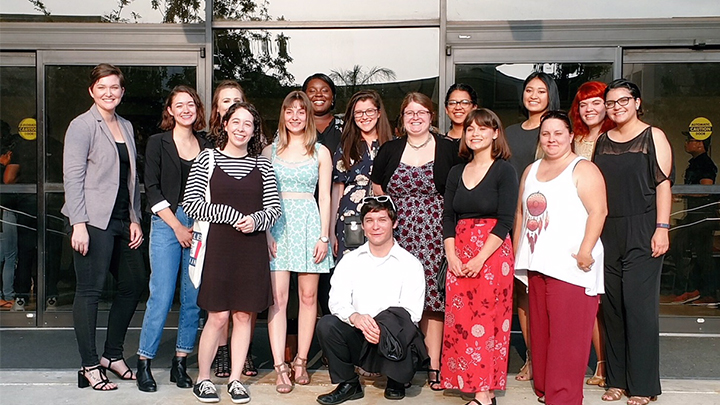
Credits and Acknowledgments:
Spring 2018 Museum Methods Class
Course Instructor and Head Curator:
Vivian Gornik
Student Curators:
Racquelle Banuelos, Lady Marie Bulilan, Caitlyn Daugherty, Amanda Fiske, Amanda Gross,
Amanda Hassinger, Ivy Johnson, Liam Johnson, Lauren Leigh, Samantha Martinez, Emily
Miller, Rachel Nipper, Carolina Nunez, Crystal Reina, Samira Rosario Martinez, Stephanie
Schwartz
The creation of this exhibit would not have been possible without the help of the
following people:
Elizabeth Bird, Heide Castañeda, David Himmelgreen, Erin Jensen, Sue Rhinehart, Brittany
Vojnovic, Kevin Yelvington
We are thankful for the financial and material contributions we received from the following organizations and individuals:
- USF Department of Anthropology
- Applied Anthropology Graduate Student Organization
- Anthropology Club
- Phi Alpha Theta
- Florida Public Archaeology Network, West Central Regional Center
- Michael J. Miller
Are we living in the Age of Humans?
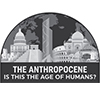
Some scientists believe we are and they want to officially name it the Anthropocene. The concept of the Anthropocene stretches far beyond ideas of climate change. Scholars in fields ranging from geology to biology and history to anthropology are using this new term.
If we are in the Anthropocene, when did it start? Why did it start? Who is responsible? Where and how can we observe human impact on the Earth? If we are in the Anthropocene, what does that mean for our future? Explore our exhibition and judge for yourself. Are we in the Age of Humans? Or not?
The Anthropocene: Is This the Age of Humans? Exhibition Opening - USF Anthropology
Credits and Acknowledgments:
Instructor and Head Curator: Vivian Gornik
Student Curators:
Michelle Assaad, Amanda Centeno, Meghan Clancy, Gary Curtin, Alisha Galdames, Regina
Holder, Kaitlyn Kingsland, Bryan Kotovsky, Megan Little, Colette McDonald, Rebekah
Munson, Lauren Payton, Alexander Snider, Brittany Stone and Patricia White
Featured Faculty:
Dr. Heide Castaneda, Dr. David Himmelgreen, Dr. Dillon Mahoney, Dr. Thomas Pluckhahn,
Dr. Robert Tykot, Dr. Diane Wallman, Dr. Christian Wells, Dr. Nancy White, Dr. Linda
Whiteford, Dr. Kevin Yelvington and Dr. Rebecca Zarger
Anthropocene Logo Design: Margaret Lavinghousez
Handprint Logo Design: Sandra Noland
The Naidirolf: From Global Tourism to Local IdentityExhibit Gallery Opening
This exhibition is a response to the emerging discourse on 'Viva La Florida'—Florida's so called quincentennial. We take our inspiration from a recent essay in the Tampa Bay Times called "What Can We Learn on Florida's 500th?" by John Belohlavek and Andy McLeod from the Florida Humanities Council. In this article, the authors argue that it is vitally important to understand contemporary Floridian identity to be able to meet the economic and environmental challenges of the 21st century. They propose that the key to deciphering the complex identity of Floridians is to examine the ways in which history and heritage have shaped global citizenship. In this exhibition, we approach the challenge from an anthropological perspective, leveraging the philosophical insights of Horace Miner's 1956 article on "The Nacirema" to turn the mirror on ourselves: The Naidirolf.
Here, we explore Naidirolf identity through global tourism, under the premise that, while objects represent the identities of their makers, collections represent the identities of their collectors. We argue that one way to understand Naidirolf identity is to examine the collections of the Naidirolf, who have traveled widely around the world collecting "pieces of places". In this analysis of ancient British stone quarries, Richard Bradley recently coined the phrase "pieces of places" to suggest that the social and symbolic significance of the location from which items are acquired are sometimes just as important as the use value of those items. Similarly, in her cross-cultural examination of chiefly societies, Mary Helms argues that objects procured from geographically (and hence socially and temporally) distance places "are marked by the inalienable qualities associated with their unusual places or sources of origin".Keyhole2
As Marcel Mauss's examination of Pacific societies has shown, gifting creates social relations. By gifting their collections to USF, the collectors remain forever linked to the objects on display here. Annette Weiner, in her own examination of South Pacific exchange networks, refers to this relationship as "keeping-while-giving". According to Weiner, some culturally significant objects may be lent or circulated but will always refer back to their original owners as their "inalienable possessions", which give a tangible durability to their identity. Thus, although legal ownership may be transferred through exchange, the identity of the maker is extended into the object itself.
Given the ties that bind collectors to their collections, Alfred Gell argues that collections are enmeshed in social relations and that the objects in a collection have just as much agency as the person who created them. As a result, this exhibition represents but a temporary resting place in the broader "cultural biographies" of the things contained herein. Igor Kopytoff uses the phrase "cultural biography of things" to call attention to the cultural constructions and life histories of objects as they flow in and out of various phases—from gift to commodity—and how these flows condition meaning and materiality. He argues that cultural biographies of things "make salient what might otherwise remain obscure" about the culture in which things take an active role.
In this exhibition, we explore the cultural biographies of the objects in the collections, and juxtapose them with the personal biographies of their collectors. Doing so we hope will reveal insights into the identities that compose the mysterious Naidirolf, who have long been fascinated by peoples and objects from faraway places.
Acknowledgements
We are very grateful to all those who assisted in the development and production of this exhibition: Liz Bird, Carole Bumford, Destiny Crider, Karla Davis, Marion Gatliff, Vince Kral, Liz McCoy, Jeff Moates, Neesheta Patram, Travis Puterbaugh, Sue Rhinehart, Debbie Roberson, Arleyn Simon, Noel Smith, Alyssa Thomas, Linda Whiteford, and Helen Wyskiver.
Exhibition Team
Curator: Dr. E. Christian Wells
Preparators: Alaina Bridges, Laura Collins, Paige Downey, Lily Dresser, Samantha Goelz, Molly Keane, Ariana Kepner, Natasha Koller, Luke Lopez, Adelina Mititelu, Jessica Raposo, Jenni Royce, Lindsay Shelton, Chaneese Smith, Sierra Young